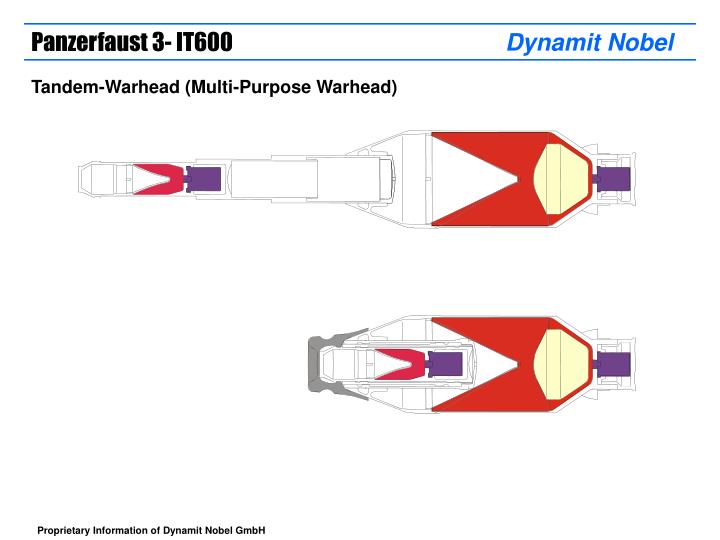
J.J.S.
-
Posts
5 -
Joined
-
Last visited
Content Type
Profiles
Forums
Blogs
Gallery
Downloads
Events
Posts posted by J.J.S.
-
-
I have no idea where you learned physics to conclude that steel cuboid with 150x150x6 mm dimensions has the same or higher weight than steel cuboid with 150x150x10 mm dimensions, excluding the additional mass of cassete sides, screws and mounting beam. Then learn Gurney equations.

-
The shape of liner is not all. To reduce energy of of jet/slug it is possible to either decrease its velocity or density. I think that you forgot what Vasiliy Fofanov wrote about PG-7VR:
QuoteТандемность РПГ-29 строится на принципе несрабатывания ДЗ под воздействием лидера. То есть лидер расчищает ДЗ без срабатывания, потом основной заряд бьет в пустое место. Соот ветственно если подправить ДЗ чтобы она таки срабатывала, результат будет даже хуже чем если бы лидера вообще не было.
Fragment of article from russian miliary journal Kalashnikov:
QuoteСуть его заключается в том, что предварительный заряд тандемной боевой части пробивает отверстие в плитках реактивной брони без детонации содержащегося в них заряда. Этим не только обеспечивается проникновение в образовавшееся отверстие основного заряда, но и защита гранатомётчика от взрывной волны и осколков при стрельбе с близкого расстояния.
Explosive used in 4S23 has improved sensitivity in comparison with 4S22. It might explain why Relikt is claimed to be very effective against tandem RPGs.
-
On 3/21/2020 at 12:22 AM, Zadlo said:
Well, jet tip is faster in HEAT warhead than in EFP one.
 But that's not the point.
But that's not the point.
The idea of EFP precursor in tandem warhead is quite simple - initiate the ERA but do not take large part in classic penetration. In this case to initiate ERAWA you need to have effective HEAT warhead. As you can see in one article you posted there were one type of warheads which caused the ERA explosion. They have also 42mm caliber but they penetrate ~260mm of steel alone.
The purpose of using EFP precursor in this case is NOT to initiate ERA, 4S20 and 4S22 won't detonate on EFP (and other low velocity projectiles) impact. Tandem RPGs like Panzerfaust 3-T, PG-7VR (russian ATGMs don't) use non-initiating precursors to increase the safety of infantryman using them against tanks with ERA at short ranges. On the other hand, such precursors are almost useless against targets with good passive protection against HEAT. On the picture below it is shown what they do with Kontakt-5.
 On 3/20/2020 at 12:29 PM, TWMSR said:
On 3/20/2020 at 12:29 PM, TWMSR said:Wiedzmin, in case of ERAWA-1 both upper and lower metal parts of case are flyer plates. Mounting beams are not sturdy enough to stop lower part (base) of case movement and are being smashed in the process. So, even if only upper part looks like flyer plate, both are flyer plates. And in ERAWA-2 there is one more plate between H.E. layers.
This lower part is quite heavy and will move with lower velocity than upper plates. Moreover these mounting beams will additionally slow it down. That's why such movement shouldn't be efficient against cumulative jet.
-
On 3/18/2020 at 8:42 AM, Militarysta said:
Well from my article in FO! :https://fragout.uberflip.com/i/1150145-frag-out-magazine-25/79?
There is description. Generally - prototypes of Pzf-3T and IT600 has faild vs ERAWA in 2000 (losing 50% penetrating power) but finall PzF-3IT600 whit new main "super fast" SC perforated in 2007 ERAWA-2 without any problem (lost only ca 100-150mm RHA).
The main difference between 3-T and and final 3-IT600 that might explain such results, is precursor warhead shape.

During other tests EFP precursor with 40 mm diameter proved almost totally ineffective against ERAWA-2 (no perforation of upper plate).

I think that it's impossible to fully reduce reactive armour efficiency by simply increasing jet tip velocity (with copper liners it's also difficult to exceed 10 km/s) taking into consideration this fragment of "Evolution of ERA for light-armoured fighting vehicles" :
QuoteThe plastic explosives used in the first generations of ERA featured high sluggishness. Detonation of the explosive compound took place only 3…5μs after the impact of the shaped-charge jet. As a result the jet leader managed to get through the ERA (Fig.6). With the velocity of 9…10km/s and weight of 5…10 gram, the slipped leader could pierce 50…80 mm of steel armor that is sufficient to disable LAV.
It is possible to reduce or completely prevent the breakthrough of the jet leader by using high-sensitive explosives, but in this case the problems of ERA element inflammation when perforated by small arms bullets and ERA element detonation under the impact of 30mm and heavier ammunition become more urgent. These problems have been solved in ERA with 4S24 elements (Fig.7).
Explosive Reactive Armor
in Ballistics Science Discussion
Posted
Such explanation is also included in Dynamit Nobel Defence marketing brochure:
For the same reason they developed CLARA ERA with composite plates instead of metal ones.
However, almost all weapons with SC that have been designed for last 30 years still have warheads with precursor. Modern ERA have improved reaction time, good example of this is russian 4S24 in comparison with 4S20.
Moreover, thick passive plates placed in front of reactive armor can significantly erode jet tip and reduce its velocity. For example there is 50 mm of steel between ChSKW-34 layers in Duplet from Oplot-M hull and 25 mm in front of 4S22 in T-72B ob.1989. Even 10 mm thick steel plate has noticeable effect.